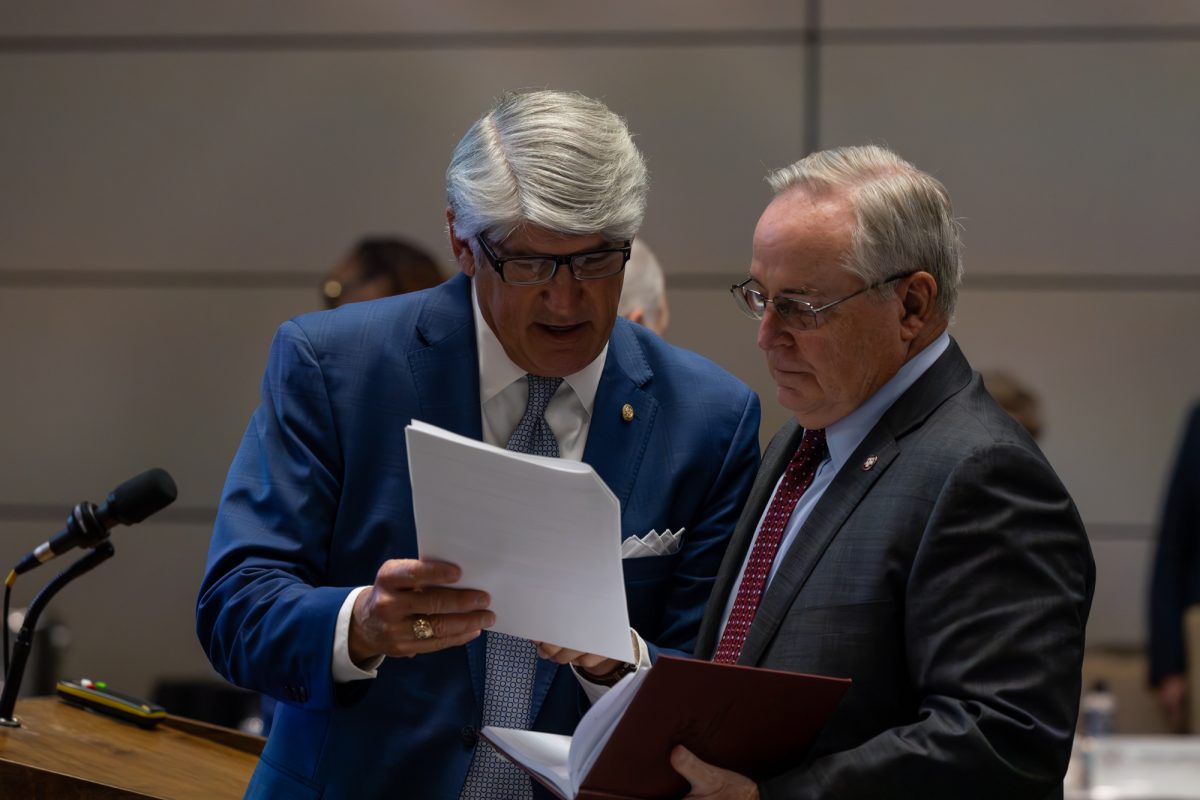On April 16, 2007, the campus of Virginia Tech was stained with the blood of 32 people killed and 20 injured in the deadliest shooting in U.S. history. The victims were shot by Virginia Tech student Seung Hui Cho. Cho then turned the gun on himself.
Vice President of the Texas A&M Department of Emergency Preparedness Christopher Meyer described the feelings in the office on that day as horrifying.
“We could all imagine the chaos and heartbreak that would happen on our campus if something like that were to happen to us,” Meyer said.
Campuses across the nation joined in mourning the shocking incident and were left to wonder about the reality of a similar one on their campuses.
“Initially our heart goes out to [Virginia Tech] and then soon after that you start trying to piece together, from media reports and contacts, what really happened and trying to make sure that we are in a position to learn from that and hopefully improve our responses should something like that happen here,” Meyer said.
Across the country safety-scrutinizing task forces were called, protective measures were examined, and preventative strategies were analyzed.
The Virginia Tech tragedy prompted A&M to implement procedures and programs as well as underline and bold the importance of programs and initiatives already in place, from cell phones to residence halls.
The Virginia Tech Review Panel, appointed to examine the situation, reported: “the protocol for sending an emergency message in use on April 16 was cumbersome, untimely and problematic when a decision was needed as soon as possible.”
Texas A&M launched a emergency message system, Code Maroon, in September 2007. The Code Maroon system was designed to send alerts through cell phones, e-mails, radio announcements and pop-ups on campus computers in the event of an emergency.
Meyer said University police actively worked to improve readiness and effectiveness. He said the University re-doubled efforts to train with Bryan, College Station and Brazos County sheriff officers to make sure responses were timely and efficient.
A&M staff and students needed training for emergencies situations that included shooting incidents. The Virginia Tech Review Panel learned that the campus did not review or prepare the campus for emergencies.
“Shots Fired” educational videos were designed to teach students, faculty and staff what to do if there was an active shooter on campus.
The Texas A&M Emergency Preparedness website offered advice in what to do and expect when there is an active shooter outside the building, inside the building, inside the classroom or leaving the classroom.
“We spent a lot of time and effort and money to make sure that if it does happen, we respond effectively to try to save lives, but it’s equally important, and maybe more important, to note that we are spending great deal of time and effort and money trying to make sure that type of situation doesn’t play out here,” Meyer said.
He said leaders on the Special Situations Team make an effort to intercede and intervene with people who might be having difficulties. Created after the Virginia Tech shootings, the Special Situations Team brings administrators together to develop methods to prevent such a shooting at A&M.
Representatives come from Student Health and Counseling Services, Engineering Technology and Institutional Distribution, University Police, Human Resources, Disability Services, Department of Multicultural Services, Dean of Faculties and Student Affairs.
The Tell Somebody campaign encourages people to report any concerning behavior to the Tell Somebody website or member of the Special Situations Team.
Cho’s first victims were shot in an on-campus residence hall, prompting questions of how a nonresident was able to enter undetected and undeterred.
Maggie Guzman, Residence Life Risk Management program coordinator, said Texas A&M has many security precautions in place to stop a similar occurrence on campus.
“We feel like our halls are a safe place to be,” Guzman said.
Access cards, keys, patrolling police officers, on-duty residence hall staff, staff training and education are some of the safety procedures. Residence Life educates students on the dangers of letting in “tailgaters,” or people who tag-along behind students to gain entry to the hall without an access card.
Since the tragedy, Residence Life implemented the University’s Listen, Educate, Act, Dial and Seek initiative by placing LEADS posters in residence halls outlining emergency procedures.
“The impact has been high and I think our preparedness and prevention efforts are much better because of the tragedy that has befallen others,” Meyer said.
Virginia Tech shooting: A&M adopts emergency plans
April 28, 2010
0
Donate to The Battalion
$2065
$5000
Contributed
Our Goal
Your donation will support the student journalists of Texas A&M University - College Station. Your contribution will allow us to purchase equipment and cover our annual website hosting costs, in addition to paying freelance staffers for their work, travel costs for coverage and more!
More to Discover









